ASIA

Diamond Princess
Diamond Princess
Keelung
Port of Yokohama,Japan
Port of Yokohama
Oier dock for Diamond Princess, Yokohoma
Old City, Yokohama
Craft exhibits, Yokokama
Statue of girl with red shoes in Yokohama
Port of Shimizu, Japan
Sunpu Castle
Tokugawa-ieyasu-statue
Shizuoka Sengen Shrine
Hagoromo-no-Matsu
Kyoto Tower
Toji Temple
Osaka Castle
Kinkakuji Temple (Golden Pavilion)
Heian Shrine
Torii gate
Grand Hotel, Taipei
Martyrs Shrine, Taipei
National Palace Museum
Moving treasure crates (1933
Taipei 101
Statue of Tran Hung Dao
Bumboat on the Singapore River
Merlion Park, Singapore
Curled ruyi figure
Taiwan Chiang Kai-Shek Memorial
Hall
Kai Tak Cruise Terminal
Fred DaNang (Dec., 2011)
Fred Chi Chi Tunnels (Dec., 2011)
Coastline of Nha Trang
Christ the King Cathedral, Nha Trang
Reunification Hall Ho Chi Minh City
Ho Chi Minh City War Remnants Museum
Central Post Office
Norte Dame Cathedral, Ho Chi Minh City
Ho Chi Minh City
Hall
Bumboat on the Singapore River
Raffles Hotel, Singapore
Free Airport Tour
Singapore Airport Terminals
Free Airport movies
Hong Kong Airport and Cruise Port
Hong Kong
MEDITERRANEAN CRUISE
June 27 - July 8, 2018
My adventure started with a taxi ride to the MSP airport where I boarded a KLM flight to Amsterdam. From Amsterdam I took a shorter flight to the Rome airport.

A Norwegian Cruise Line representative (above) met those of our cruise members and loaded us onto
a shuttle bus for the hour-long ride to our ship on the coastline. The trip was an enjoyable one that passed through the open countryside of rolling hills and some flat spaces of fields laden with rolls of bailed hales of hay and occasional crops of cultivated sunflowers. On board of our vessel we had the ubiquitous life boat station drill. On the bright side the waitress in theWindows Dinning Room wished me happy birthday. When I requested a birthday song, she replied she couldn't sing. I then asked if she could do a dance for me: accordingly she performed ann animated gig. That evening the Norwegian Spirit departed for our next port of call.

A Norwegian Cruise Line representative (above) met those of our cruise members and loaded us onto
a shuttle bus for the hour-long ride to our ship on the coastline. The trip was an enjoyable one that passed through the open countryside of rolling hills and some flat spaces of fields laden with rolls of bailed hales of hay and occasional crops of cultivated sunflowers. On board of our vessel we had the ubiquitous life boat station drill. On the bright side the waitress in theWindows Dinning Room wished me happy birthday. When I requested a birthday song, she replied she couldn't sing. I then asked if she could do a dance for me: accordingly she performed ann animated gig. That evening the Norwegian Spirit departed for our next port of call.
Most of the cruise ship passengers took day trips to the famous cities of Pisa or Florence, but since I had spent considerable time in both places I abstained from shore excursion offered by the cruise line. Instead it was venturing ashore at Livorno for sightseeing by myself.


During the Renaissance and the rule of the Medici family, Livorno was fortified and the recipient of many towers, forts and city walls to aid its defense. Much of these defenses remain today and you can still see the pentagonal shape of the old historic city center.
 .
.
Livorno, the Tuscany town founded by the Medici family, has a unique system of ancient canals, the so-called “Fossi”. Royal Canal (below).
 .
.Livorno, the Tuscany town founded by the Medici family, has a unique system of ancient canals, the so-called “Fossi”. Royal Canal (below).
After reaching Plazza Munnicipio, I noticed a unique looking church (below) on the large square.
The Church of St. Ferdinand, popularly known as Crocetta, was suppressed by Napoleon in 1808, the parish remained without clerics till 1848. In August 1853, the Trinitarians re-acquired the parish and convent. It later became an elementary school.


.
Statue of Garibaldi, a major figure in the Unification of Italy. Giuseppe Garibaldi was an Italian general and nationalist. A republican, he contributed to the creation of the Kingdom of Italy. He is considered one of the greatest generals of modern time and one of Italy's "fathers of the fatherland"

Fortezza Vecchia
At the north end of the old port area, Fortezza Vecchia was built by Antonio da Sangallo for Cardinal Giulio de' Médici between 1521 and 1534. It is dominated by a round tower known as the Mástio di Matilde, part of an earlier 11th-century castle and Livorno's oldest remaining structure from the early Middle Ages. The Medici fort also incorporated a crenellated area that was added in the 14th century. The little church of San Francesco inside the fortress was built in 1530. The fortress is usually open for tours, when you can climb to the top of the Mástio di Matilde for views of the port and city. The fort is close to the cruise port, so for passengers with only a short time ashore, it's one of the easiest things to do in Livorno.

Livorno's main street, Via Grande draws a wide straight line from the harbor, across the Piazza Grande to the broad Piazza della Repubblica, with statues of Ferdinand III (d. 1824) and Leopold II (d. 1870), the last Grand Dukes of Tuscany. In Piazza Micheli, which opens on to the harbor, is a monument to Grand Duke Ferdinand I (1587-1609). It's popularly known as the Monumento dei Quattro Mori (Monument of the Four Moors) after the four bronze figures on the base. The central feature of the old town is the long Piazza Grande, where you'll find the cathedral, built between 1594 and 1606. Rebuilt to original after WWII bombing.
Church of San Giovanni Battista on Via Grande (above).
The church was damaged by earthquakes in 1742 and 1814, and underwent repairs in 1833. The Augustinian monks were expelled by Granduke Pietro Leopoldo in 1785, but they were allowed to return in 1856.
Statue of Mazzini that looks like Napoleon. Monument is surrounded by government buildings and is facing the sea. Giuseppe Mazzini was an Italian politician, journalist, activist for the unification of Italy and spearhead of the Italian revolutionary movement. His efforts helped bring about the independent and unified Italy.



Back on the Norwegian Spirit, the view of Liverno

CANNES , FRANCE is a city located on the French Riviera and host city of the annual Cannes Film Festival. The city is known for its association with the rich and famous, its luxury hotels and restaurants, and for several conferences. Many of our fellow tourists chose the option of going to Monaco, but since I had been there before, I took a 4 and half hour tour to Nice instead. We did traveled through Cannes before heading to for the old town of Nice.


The Castre museum (above) is located on the Place de la Castre, at the top of the Suquet hill in Cannes, in the remains of the medieval castle of the monks of Lérins. It could be seen from the ship.
The tour through the city seemed to be of endless display of wealth (below)




On the road between Cannes and the Old City of Nice we came across this statue of Napoleon (below) erected on the site where the emperor returned to France from exile to establish an army.


As we enter the city, we drove along the Promenade des Anglais (above), a lovely palm lined boulevard stretching three miles along the Baie des Anges.

We passed landmarks such as the legendary Negresco, (above) an imposing hotel with a Rococo façade. A landmark building overlooking the grand sweep of the Promenade des Anglais, built in 1912 for Romanian innkeeper Henri Negresco.
At entrance to the old city of Nice was this monument placed on the site of the old fish market (below).

In old Nice, we walked through the streets, trying to keep pace with our guide.




As we enter the city, we drove along the Promenade des Anglais (above), a lovely palm lined boulevard stretching three miles along the Baie des Anges.

We passed landmarks such as the legendary Negresco, (above) an imposing hotel with a Rococo façade. A landmark building overlooking the grand sweep of the Promenade des Anglais, built in 1912 for Romanian innkeeper Henri Negresco.
At entrance to the old city of Nice was this monument placed on the site of the old fish market (below).

In old Nice, we walked through the streets, trying to keep pace with our guide.



The construction of (he current main building took place between 1650 and 1865. In 1699, the new cathedral was officially consecrated while additional construction continued. The prominent bell tower was built next to it between 1731 and 1757.

Here in the cathedral plaza, I tried out a n Italian tuna salad (for 10.5 Euros).

Here in the cathedral plaza, I tried out a n Italian tuna salad (for 10.5 Euros).
Cours Saleya (above) is an elegant promenade lined with shops, restaurants and home to the famous flower market that’s held here.
And then it was back to the Norwegian Spirit via tenders.
City bus tour offered by Norwegian Cruise Line.


Our tour guide (left) and fellow traveller
Marseille Cruise Port.Marseille, gateway to Provence, is France's largest port and second largest city, with a vast history stretching back more than 2,000 years to its foundation by the Greeks in the 6th century BC.
Two large forts flank the entrance to the Old Port—Fort Saint Nicholas on the south side and Fort Saint Jean on the north.

Fort St. Nicholas
Like many port around the world, Marseille long had a reputation for seediness and crime. And there’s still scruffiness about the city today, which is no bad thing. It lends Marseille a rakish character and gives it an intoxicating dynamism and color.

We began the tour with a motor coach ride through the area known as the 'Le Vieux Port' or Old Port where the Greeks landed in 600 B.C. Here the cafes, the boats and the restaurants are classically French. I took photo shots from the bus, so that accounts for the lettering on some of the windows

Hotel de Ville (City Hall) white building in center and white church further down on the right

To our right was the harbor lined with many boats


Completing the trip around the harbor we see Fort Nicholas again guarding the port city.
We continued the drive along the Corniche J.F Kennedy, which follows the natural coast and offers lovely views of offshore islands dominated by the Marseilleveyre Massif (below).



Hotel de Ville (City Hall) white building in center and white church further down on the right

To our right was the harbor lined with many boats


Completing the trip around the harbor we see Fort Nicholas again guarding the port city.
We continued the drive along the Corniche J.F Kennedy, which follows the natural coast and offers lovely views of offshore islands dominated by the Marseilleveyre Massif (below).


During the photo stops from our coach, we saw Notre Dame de la Garde Basilica (photo above), the most magnificent building of its kind in southern France, with the statue of the Virgin and Childon the top of the bell tower. The basilica was built in the mid 1800s in Romano-Byzantine style and boasts beautiful ex-votos on the walls and a stunning marble statue in the crypt.
After driving through the shopping district, we stopped outside the Longchamp Palace (photos above) where we were rewarded with the chance to take some excellent photos. The Palais Longchamp (above) was created to celebrate the construction of the Canal de Marseille which was built to bring water from the Durance River to Marseille. It took 30 years to complete and opened in 1869.

I had visited Barcelona a number of times and loved the city. This time I settled for a 4 ½ hour tour via the cruise ship offer, especially because the tour offered a cultural stop for flamenco dancing.
There still was evidence of resistance to Barcelona's remaining within the Spanish government. Signs of independence and democracy, including flags hanging from windows gave voice to resistance (above).
Drive along the elegant Passeig de Gracia (above), one of Barcelona’s most important shopping and business districts, lined with wrought-iron street lamps and some of the city’s most celebrated Modernist architecture.

We caught all the highlights of the city, but we especially were thrilled to see the Sagrada Familia (photo above) -- Europe’s most unconventional church and Gaudi’s greatest work. It was his life’s work and he lived on the site for 16 years. He is buried in the crypt (where services are currently held). The church construction began in 1883 and is still unfinished. Yet to come is the large central tower.
We admired Gaudi’s controversial and towering masterpiece, La Sagrada Familia (The Holy Family) Church.
In the center of the Gothic District is the city's gothic cathedral, known as La Seu (above). The first stone of the current church was laid in the 13th century, but it was not until the early 20th century before the cathedral was fully completed. A Roman chapel, the Capella de Santa Llucia, was added between 1257 and 1268. It was later incorporated in the cloister next to the cathedral. Next to a font inside is a plaque with records of 6 Indians Columbus brought here from the Caribbean to be baptized (1493). This is also where Isabel and Ferdinand received Columbus after his triumphant return from America. On an earlier trip I visited the interior of the church.
At the Tablao de Carmen in the Andalusian Quarter we were entertained by a lively flamenco show (below). This very expressive Spanish dance form features guitars, song, dance, and much rhythmic foot stomping and hand clapping.


La Rambia
Both the Passeig and the Rambla (above) radiate out from the enormous Catalunya Square , considered to be the heart of the city.We caught all the highlights of the city, but we especially were thrilled to see the Sagrada Familia (photo above) -- Europe’s most unconventional church and Gaudi’s greatest work. It was his life’s work and he lived on the site for 16 years. He is buried in the crypt (where services are currently held). The church construction began in 1883 and is still unfinished. Yet to come is the large central tower.
We admired Gaudi’s controversial and towering masterpiece, La Sagrada Familia (The Holy Family) Church.
The coloration of the stone gave evidence to different periods of construction
Casa Batilo
Another building of Gaudi we saw was the Casa Mila. He departed from established construction principles of the times and was ridiculed. There are no straight walls anywhere in the building.
One architect said of this building: "La Pedrera—'the quarry' —was the name an astounded population gave to this completely unique building. It could be compared with the steep cliff walls in which African tribes build their cave-like dwellings. The wavy facade, with its large pores, reminds one also of an undulating beach of fine sand, formed, for example, by a receding dune. The honeycombs made by industrious bees might also spring to the mind of the observer viewing the snake-like ups-and-downs that run through the whole building.
In the center of the Gothic District is the city's gothic cathedral, known as La Seu (above). The first stone of the current church was laid in the 13th century, but it was not until the early 20th century before the cathedral was fully completed. A Roman chapel, the Capella de Santa Llucia, was added between 1257 and 1268. It was later incorporated in the cloister next to the cathedral. Next to a font inside is a plaque with records of 6 Indians Columbus brought here from the Caribbean to be baptized (1493). This is also where Isabel and Ferdinand received Columbus after his triumphant return from America. On an earlier trip I visited the interior of the church.
At the Tablao de Carmen in the Andalusian Quarter we were entertained by a lively flamenco show (below). This very expressive Spanish dance form features guitars, song, dance, and much rhythmic foot stomping and hand clapping.

For the grand finale we walked around the Spanish Village, where we found full-scale replicas of the most representative buildings and squares from all over Spain.




The top of the hill (a height of 173 metres) was the site of several fortifications, the latest of which, the Castell de Montjuïc (above) remains today. The fortress largely dates from the 17th century, with 18th century additions. In 1842, the garrison (loyal to the Madrid government) shelled parts of the city. It served as a prison, often holding political prisoners, until the time of General Franco. The castle was also the site of numerous executions.
And then back on the ship for New York Strip Steak and a Margareta.

PALMA, MAJORCA
I spent a couple of weeks in Majorca (Mallorca) back in January of 2001 with Grand Circle Travel, so I decided to stay on the ship. We had docked quite a ways from the central city and so we did not get a good view of th city from on board. There is so much dock activity that new docking areas have been created




Sardinia has deeply rooted traditions. Food and wine always come first to mind but their music and dances are also an integral part of their culture. Experience them as you join your fellow cruisers on this memorable outing.

Stop in front of the Basilica of Bonaire (photo above) while your guide explains its history.
From the viewpoint at Monte Urpino, we will have a great view of the old city, dominated by the Cathedral and the bay with its salt ponds.



See the popular Poetto Beach on your way to Maracalagonis, a rich agricultural area at the foot of the Sette Fratelli Mountains.


Basilica of Bonaire
Stop in front of the Basilica of Bonaire (photo above) while your guide explains its history.
From the viewpoint at Monte Urpino, we will have a great view of the old city, dominated by the Cathedral and the bay with its salt ponds.



See the popular Poetto Beach on your way to Maracalagonis, a rich agricultural area at the foot of the Sette Fratelli Mountains.

Statue of St. Francis of Assisi
In these mountains, herds of wild boar and Sardinian deer are still found. Being so close to Cagliari (about 15 miles), allows the people living here to keep their traditions without suffering the inconvenience of excessive isolation.
Stop at a typical country house to enjoy a lively folkloric performance with dancers dressed in ancient Sardinian costumes. While you watch, try some of the local delicacies and cookies prepared according to traditional recipes, all accompanied by Sardinian wines. You’ll be welcomed to join the locals on the dance floor and learn a few steps.




After learning about Sardinian food, dance and traditions, we’ll return to the ship full of joy.

Stop at a typical country house to enjoy a lively folkloric performance with dancers dressed in ancient Sardinian costumes. While you watch, try some of the local delicacies and cookies prepared according to traditional recipes, all accompanied by Sardinian wines. You’ll be welcomed to join the locals on the dance floor and learn a few steps.
Greeter to welcome our groupa




After learning about Sardinian food, dance and traditions, we’ll return to the ship full of joy.

VALLETTA, MALTA has an estimated population of more than 400,000 people. Malta's de facto capital is Valletta.. The islands enjoy a Mediterranean climate. The country's official languages are Maltese and English, which replaced Italian in 1934. Throughout its history, Malta's location in the Mediterranean Sea has given it a strategic importance. A sequence of powers including the Phoenicians, Romans, Fatimids, Sicilians, Knights of St John, French and British have all ruled the islands. Malta gained independence from the United Kingdom in 1964 and became a Republic in 1974, whilst retaining membership in the Commonwealth of Nations. It is a member of the United Nations (since 1964) and a member of the European Union (since 2004). Malta is known for its world heritage sites, most prominently the Megalithic Temples that are the oldest freestanding structures in Europe. I visited those unique Temples on an earlier tour.
Malta has a long legacy of Roman Catholicism, which continues to be the official and dominant religion in Malta. According to the Acts of the Apostles (Acts 27:39-42; Acts 28:1-11), Saint Paul was shipwrecked on the island and ministered there. The last time I visited Malta (Grand Circle Travel), I toured sites associated with St. Paul’s experience here. Malta is also suggested as a hypothetical location of the mythical lost island of Atlantis
On the road to Sengles

Senglea

Drive through Cospicua (above) on our way to Vittoriosa. Its honorific name of Vittoriosa was granted as a result of its victorious stand in the Great Siege of 1565. Walk along the narrow streets of this city, admiring such historic sites as the Church of St. Lawrence and Fort St. Angelo, from the outside.
 .
.
Embark on a traditional Maltese ‘Dghajsa’ (boat) for a short trip within the Grand Harbor, which served the Knights of St John for 268 years. Many wars were fought here and the British military also used the harbor for many years, but that is all in the past.















Weather-worn Maltese sailor
Refreshing gelato at the dock
Malta Maritime Museum by docking station

Historic St. Lawrence by the docking station

Heading to Marsaxlokk pass farmers' plots enclosed with stone walls.
I purchased 3 Malese Knights refrigerator magnets
Pizza (3 Euros)

Colorful fishing village
Fisherman statue on the waterfront

MESSINA (SICILY)


I had spent conservable time previuosly in Sicily. Messina is a great and city close to Toro and Mt. Edna; all worth visiting.


The Madonna della Lettera that dominates the port of Messina
is the Saint Patron of the city, celebrated the 3 of June
In 1189 the English King Richard I ("The Lionhearted") stopped at Messina en route to the Holy Land and briefly occupied the city after a dispute over the dowry of his sister, who had been married to William the Good, King of Sicily.
The cathedral forms one end of the wide Piazza del Duomo, Messina's historic center, and in front of it is the Orion fountain, created from 1547 to 1551 by G.A. Montorsoli from Florence a student of Michelangelo. On the left long side of the cathedral stands the Baroque column of the Virgin Mary by Giuseppe Buceti, erected in 1758. The church was built in the 1100s by the Normans, who ruled Sicily at the time, but it was seriously damaged by an earthquake that devastated much of Messina in 1908. Barely recovered from that, the cathedral was again severely damaged by World War II bombing. Following both, the reconstruction remained true to the original form and retained important later features such as the carved stone portals from the late Gothic period, medieval relief carvings on the lower facade, and three apses on the east side that date from its founding.

A promontory (above) juts out from the west of Messina into the harbor with the remains of a citadel called the Fort of San Salvatore, which was built in 1681. It forms the base for a 60-meter octagonal column erected in 1934, topped by a statue of the Madonna della Lettera. Locals call it the Madonnina, little Madonna. Inscribed on the monument is "Vos et ipsam civitatem benedicimus" (We bless you and your city), a quote from a letter the Virgin Mary was believed to have sent the people of Messina. The pillar can be reached on foot by crossing over the tracks at the railroad station, although it is better to use the boat service.
NAPLES, AND SORRENTO, ITALY

Our seven a half hour tour began with Sorrento and ended with Naples (map below).
When the Norwegian Spirit docked it was not in the best location for a view of the city, but I took a photo from the back of the ship.

Naples (Napoli in Italian) is also known by some for its natural beauties (Posillipo) comparable to those of Rio de Janeiro. Culinarily, Naples is synonymous with pizza which originated in the city and was declared as UNESCO Intangible Cultural Heritage. Neapolitan music has furthermore been highly influential, credited with the invention of the romantic guitar and the mandolin, as well as notable contributions to opera and folk standards.
Our seven a half hour tour began with Sorrento and ended with Naples (map below).


The tour started with a panoramic drive along the winding coast taking us to the quaint city of Sorrento.
The scenic view above the city had a number of viewing stations. Some enterprising vendors utilized these spots as well (below).

The scenic view above the city had a number of viewing stations. Some enterprising vendors utilized these spots as well (below).

Driving in Italy presents a problem with impatient aggressive cyclists passing traffic on the center
line (below).
Upon arrival, our guide will introduce us to this lovely city and give us 2 hours free time so that we can explore on your own. Our meeting point would be here by the city wall (above).
We passed through this city archway of the wall
My first destination was the community's major church, Cathedral Sorrento:
The church was first built around the 11th century and was rebuilt in the 15th century in Romanesque style. The poet Torquato, the best-known citizen of the town, was baptized in the church's baptistry.

Continuing on I reached Torquato Plaza where an imposing statue of the great poet graced the square
Since I could use a little assistance getting around the city I employed a horse and buggy. The businessman owner said the ride would cost 60 Euros. When I told him I didn't have that many Euros, he said he would settle for $100 US dollars. Either he was poor at math or was a little bit dishonest.
After we came to reasonable terms the ride got underway.

It was a hot day and the horse really needed a rest afterwards.
With still time before leaving I stopped in at a gelato shop for 3 Euro refreshment.
The trip back to Naples meant more challenges for the driver facing the bikers.

And the winding roadways....

Now that we were back in Naples, where pizza oriented, we settled in for to test the local product.

The Margarita pizza was very tasty and filling.

A very nice couple from New Jersey came over and joined me at my table. They had been helpful to me earlier in the trip and I welcomed their company.
We captured a panoramic view of the city and the Bay of Naples from the vantage point of Posillipo Hill before returning to our ship.

On the way back to the ship we had a good view of the Castle dell Ovo (below). Once an island, the land that the castle stands on is now connected to the mainland and is accessible by a footpath and road. As the oldest remaining fortification in Naples, the Castel dell’Ovo (above) was constructed in the early 6th century BC and some form of defensive structure has stood.



The Royal Palace
CIVITAVECCHIA, PORT OF ROME
Our ship arrived in Civitavecchia in the wee hours of the morning and my departure time was 7pm.
Because I had already packed my i-Pad, I will now resort to other photos from my computer and earlier shots had taken on previous visits. We had an early buffet breakfast on the 12th deck of the Norwegian Spirit where there was a nice view of Fortress Michelangelo off to our right.


Fortress Michelangelo (above)
The massive Forte Michelangelo was first commissioned from Donato Bramante by Pope Julius II, to defend thePort of Rome. The fortress was completed in 1535 under the pontifical reign of another well-known Pope, Paul III of Farnese, the great benefactor of the arts. The upper part of the Donjon still had to be completed and the task was assigned to the great Michelangelo.

Fortress St. Peter
Then off to our right from our ship was Fort St. Peter (above) in the ancient Lazzaretto Dock. Presumably the authentic lighthouse, visible from a great distance, had to be placed over an advanced breakwater, while in the docks were some lanterns. Working together with the lighthouse, lanterns allowed safe approach and entry of ships during the night. The Rock is a real castle, built around 1400 under the pontificy of Pope Callixtus III

Our shuttle bus to the airport headed towards the ancient city to be greeted by Civitavecchia Cathedral (above), devoted to Saint Francis of Assisi and served as the main church of the city. It is located in the historic center of Piazza Vittorio Emanuele It sits high above the city's port, facing the Mediterranean,

Conveniently, our bus turned left on “Principe Tommaso” promenade and past a 17th century defense wall that was built by Gian Lorenzo Bernini. In the center of the wall is a beautiful travertine fountain (below), with water coming out of the mouth of a faun.

Fountain Vanvitelli (above) and the massive defensive wall.
In the center of the wall is a beautiful travertine fountain, with water coming out of the mouth of a faun. Pope Benedict XIV commissioned the fountain in 1740, and it's the only piece of artwork on the entire wall.
Driving past these great monuments was a fitting way to end this wonderful ten day adventure.
WESTERN MED. CRUISE 2018
Friends Bill and Lois from Pennsylvania.
I met them in Toronto Airport but didn't know they were
taking the same cruise I was taking. He is a retired geologist.
Youngest contestant (below).
NORTHERN ICELAND
Iceland is famous for its woolen goods (below).
Return to the Crown Princess from our tour.
When the performer saw me taking her photo, she threw me a kiss. (below)
MUSICAL: "MAGIC TO DO"
by Stephen Schwartz
Tender returning to the ship
Da Vinci Dining Room
The broad bottom of the Viking ships (See below) allowed them to land on any sandy beach without the need of a harbor or pier? Learn fascinating facts like this with a tour of Vikingaheimar, also known as Viking World. On permanent display is an amazing full-scale replica of the famous Gokstad Ship, a Viking long ship that was discovered in Norway in 1882 and excavated almost completely intact. This seaworthy ship, Islendingur (the Icelander), was crafted by Gunnar Marel Eggertsson, who sailed the remarkable vessel to America in 2000 in honor of the 1,000-year anniversary of Leif Eriksson and Bjarni Herjolfsson's discovery of North America. This nearly four-month trip involved stops at 22 harbors and a hearty crew of eight.
The city's history began in 1497 when it was the summer home to Europe's fishing fleets, and in the 1700s it became a permanent settlement of British colonials.
SIGNAL HILL, NEWFOUNDLAND
Signal Hill was used to defend the city from seaward attack. It's also the site where Marconi received the first transatlantic wireless signal. From here, you can enjoy a panoramic view of the city, harbor and surrounding sea and explore the visitor center at Cabot Tower, which was built to commemorate John Cabot's voyage of discovery.
CABOT TOWER (ALSO ON SIGNAL HILL)
CHRIST CHURCH (Below)
This edifice was opened on 9 November 1842 as a chapel of ease for St. Thomas's Anglican Church. The present tower and bell were added around 1890. In 1930, New York film producer Varik Frissell used the interior of this church for the final scene of his historic film, The Viking, the first sound feature film made in present-day Canada.
BASILICA OF ST. JOHN THE BAPTIST
ANGLICAN CATHEDRAL OF ST. JOHN
TE DEUM WINDOW
BIRDS OF ST. JOHN'S
(Below)
Gentleman from southwest England (below)
PRINCESS CRUISE LINE FASHION SHOW
CAROL SMITH (Below)
DIXIELAND JAZZ
PASSENGERS' CHOIR PERFORMANCE
HALIFAX, CANADA
ENTERING THE HARBOR
(Below)
The capital of Nova Scotia and the largest city in Canada's Atlantic Provinces, Halifax was once Great Britain's major military bastion in North America. The beautifully restored waterfront buildings of Halifax's Historic Properties recall the city's centuries-old maritime heritage. On the waterfront one may find Nova Scotia's floating ambassador, the schooner Bluenose II, tied up to Privateer's Wharf, just as old sailing ships have done for over 200 years.
VOCALIST SOLOMON JAYE
The end of the North-Atlantic Cruise
Start of Key West, Cuba and Cuban Florida
I thought someone was looking over my shoulder to care for me when traveling, so I took this selfie in Havana.
------------------------------------------------
Royal Caribbean Cruise
Key West, Cuba and Cuban Tampa
October, 2017
Nice accommodations
aboard Empress of the Seas
Onion Soup and Steak
(Below) The Royal Theatre
(Below) Poolside Music entertainment
(Below) Departing Tampa
(Below) Tampa Bay Bridge
(Below) Our ship docked at a military port.
No photography was allowed because of military security.
The train conductor is warning me about this rule.
(Below) Hemingway's Drinking Spot - Sloppy Joe's Bar
(Below) The start of Highway U.S.1
(Below) The End of Highway U.S. 1
Shortly after the Irma hurricane, the cruise line announced that our ship would not stop at Key West, but rather spend a day at sea. Later they announced that the ship would stop and the tours would take place
Most of the damage was to trees,
but sometimes they toppled over houses.
(Below) Wreaked boats from the harbor area
were stored on barges by the docks.
(Below) The Curry House is one of the old, historic homes of a by gone era. Immaculately kept in a quiet, centrally located part of Old Town.
(Below) Kermit's Key Lime Pie Shoppe
(Below) St. Paul's Episcopal Church
(Below) Hemingway House and grounds
(Below) Ernest Hemingway Home and Museum.
Located at 907 Whitehead Street and nestled in the heart of Old Town Key West, this unique property was home to one of America’s most honored and respected authors. Ernest Hemingway lived and wrote here for more than ten years, calling Key West home. It was in this house that Hemingway did some of his best work, including the short story classics "The Snows of Kilimanjaro" and "The Short Happy Life of Francis Macomber", his novel To Have And Have Not, and the non-fiction work Green Hills of Africa
This one of the island's oldest relics, as it was first built in 1825 to help ships navigating the dangerous reefs of the lower keys. The lighthouse had a rather rough history, as it was often destroyed and damaged throughout the years and had to be replaced and restored. The one that stands there today was completed in 1849, but has undergone several additions throughout the years.
(Below) Statue of End of WWII Kiss
(Below) Fort East Martello
Construction began in 1862 by the U.S. Army on this Civil War Fort and Tower in order to provide extra protection for Key West and defend against the possibility of a Confederate sea assaultWhile Key West remained a Union-controlled island during the Civil War, the majority of Key West citizens supported the Confederacy. With such a rift, it is perhaps surprising that no battles took place on or around the island. Having no use for the Fort once the war was drawing to a close, Fort East Martello was abandoned in its unfinished state by the Army.In 1950, the Key West Historical Society, with its own army of volunteers, cleared away years of debris and dust to open Fort East Martello as its first museum.
(Below) Back aboard the Empress of the Seas a flag celebration This took place in the centrum. The work crew of the ship came from 36 different nations and the country's flags were each acknowledged.
(Below) Since most of the passengers were from the United States the reception of the Stars and Stripes was enormous.
(Below) Shouts of "USA, USA" broke out,
and the flag bearer spurred the crowd on.
HAVANA, CUBA
My only purchase of the trip -- a T-shirt
(Below) Cuba Seminar by Tracy Fairley
(Below) Castro was a Cuban revolutionary who overthrew the regime of He became a politician who governed the Republic of Cuba as Prime Minister from 1959 to 1976 and then as President from 1976 to 2008. Politically a Marxist-Leninist and Cuban nationalist, Castro also served as the First Secretary of the Communist Party of Cuba from 1961 until 2011. Under his administration, Cuba became a one-party communist state, while industry and business were nationalized and state socialist reforms were implemented throughout society.
Following Castro's death, Cuba's government announced that it would be passing a law prohibiting the naming of "institutions, streets, parks or other public sites, or erecting busts, statues or other forms of tribute" in honor of the late Cuban leader in keeping with his wishes to prevent a personality cult from developing around him.
(Below) In March 2016, President Barack Obama became the first sitting U.S. president to visit Cuba since the Castro revolution, opening a new chapter in relations between Havana and Washington.
(Below) Hours after his Senate colleague and fellow Cuban-American Marco Rubio criticized President Obama's change in U.S. policy on Cuba, Ted Cruz broke his silence on the news with a bang, calling the decision "a tragic mistake." Personally I favored the move.
(Below) Our cruise ship approached the port of Havana
around 6:30 a.m.
(Below) Our City Tour Bus
(Below) Yadira-Montero-La-Plaza-de-San-Fransisco-de-Asis
The Lonja del Comercio, which first opened on March 1909, is angled obliquely to the square on its northern side.
(Below) Museum of the Revolution
After the triumph of the Revolution, from 1959 to 1965, the building housed both the Government and the Council of Ministers and in 1965, the Central Committee of the Communist Party of Cuba was formed at the still Presidential Palace. In 1974, it became a museum dedicated to the Cuban Revolution.
(Below) Plaza Vieja has experienced many incarnations, but is now one of Havana's most vibrant gathering spots. Originally laid out in the mid 16th century, the square was once used for military exercises and was also a popular marketplace.
The National Capitol Building (El Capitolio) was the seat of Cuba's government from when it was completed in the late 1920's until the revolution in 1959. Its designers were an American firm, and El Capitolio looks much like the U.S. Capitol in Washington, DC.
(Below)Rebuilding everywhere
after the lean years of the embargo
(Below) Capitol from a distance
(Below) Statue of Jose Marti
Castro used to deliver speeches here.
(Below) Sculpture on Building from Square
No it's not Castro but Camilo Cienfugos
(Below) Tourist on Revolution Square
Background: Soviet style high rise apartment buildings
(Above and below) Cars from the 50s.
Because of the US embargo old automobiles
needed to be repaired and kept going.
Necropolis Cristobal Colon
(Below) Reconstruction Workers
(Below on right) Russian Embassy
To the left, Soviet style high rise apartments
(Below) Fusterlandia: Havana’s Ceramic Fantasy World
Jose Rodriguez Fuster was a well renowned artist long before the idea for Fusterlandia had even began to germinate in his mind. Graduating from Escuela Nacional de Instructores de Arte in the 1960’s, Fuster began displaying his drawings, paintings and ceramics around Havana before being commissioned to show his work all over Europe, his slightly surreal dipictions of people earning him the nickname ‘The Picasso of the Caribbean’. It was during his time in Europe that Fuster became inspired by the public works of Gaudi hoping that on his return he could create something similar in his own country.
(Below) The artist plans to use his artwork to decorate the entire community.
Money from his art sales promotes the project.
(Below) Entrance to a former Castro residence
Fidel Castro presented himself as a man of the people, claiming to make only 900 pesos a month (about $38) and owning no property other than a modest “fisherman’s hut” somewhere on the coast. In truth, he was worth hundreds of millions and owned 20 lavish homes, including a chalet where he goes duck hunting every year and a private marina in the Bay of Pigs.
(Below) Castro was a prodigious womanizer and food connoisseur
(Below) La Punta Fortress
La Punta, just like El Morro was designed to protect the entrance to the Havana Bay that became an important and strategic entranceway to the harbor since the settlement of the town. The nonstop landings of corsairs in the area endangered the harbor and the town. That was why in 1559 it was resolved to post lookouts at La Punta.
(Below) Malecon, Shoreline Drive
Note on the other side of the harbor is the lighthouse El Morro
(Below) The U. S. Embassy
Over the past several months, numerous U.S. Embassy Havana employees have been targeted in specific attacks. These employees have suffered significant injuries as a consequence of these attacks. Affected individuals have exhibited a range of physical symptoms including ear complaints and hearing loss, dizziness, headache, fatigue, cognitive issues, and difficulty sleeping.
(Below) Tunnel under the Bay
(Below) Present Military Base
We became aware of the military's strong control over the city when our bus was turning around at El Morro. The soldier driving a vehicle like the one shown blasted his horn continuously as if we were supposed to vanish in the air
(Below) Morro Castle
Morro Castle (Castillo de los Tres Reyes Magos del Morro), named after the three Biblical Magi, is a fortress guarding the entrance to Havana bay. Construction work on El Morro Castle started in 1590, El Morro Castle was linked with La Punta Castle, via an iron chain during times of uncertainty. In the case of an attack, this chain was tightened up and enemy ships were prevented from entering the bay. El Morro already had a big moat and other changes that had been brought about by the survey made by the Fleet’s Captain Francisco Coloma, who had found El Morro too weak on the land side due to its low walls and the shallowness of the moat.
(Below) The 12 Apostles
On the harbor side of the fort, built directly next to it, lies the Battery of the 12 Apostles, a crescent shaped fortification equipped with 12 large cannons
(Below)The Christ of Havana
Cristo de La Habana is a large sculpture representing Jesus on a hilltop overlooking the bay in Havana. It is the work of the Cuban sculptor Madera, who won the commission for it in 1953. The statue is about 66 ft) highand weighs approximately 320 tons. The statue was built from 67 blocks of marble that had been brought from Italy. T Facing the city, the statue was left with empty eyes to give the impression of looking at all, from anywhere to be seen. It was inaugurated on on December 24, 1958. Just fifteen days after its inauguration, on January 8, 1959, Fidel Castro entered Havana during the Cuban Revolution.
(Below) Monument to Cuban Missile Crisis
(Below) Empress of the Seas
Our ship was waiting for us on the other side of the Bay.
COZUMEL, MEXICO
I did not go ashore here because of so many previous visits.
TAMPA, FLORIDA
(Below)After my cruise I arranged a tour of Tampa followed by a drop-off at the airport.
Drive to Tampa (below)
(Below) Ybor City is the only neighborhood on Florida’s west coast to be designated a National Historic Landmark District. Ybor’s 7th Avenue, the main commercial thoroughfare was recognized as one of the “10 Great Streets in America”!
(Below) Ybor City was born from Cuban cigar makers who relocated with their factories in the 1880s. It soon became an enclave brought to life by a thriving Cuban community that kept strong ties to and love for their country.


(Below) Small homes of Cuban cigar workers.
The tour ended and our bus headed to the Tampa Airport.
Fred's grandson Matthew is a vicar at Trinity Lutheran Church. He preached Sunday 10/22/17











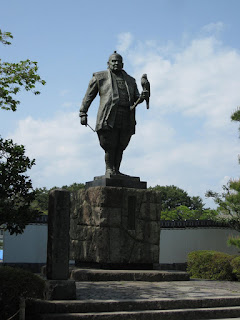























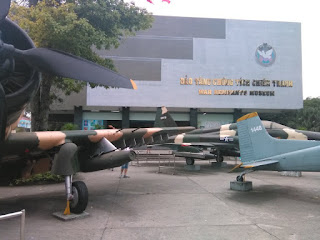





















































































































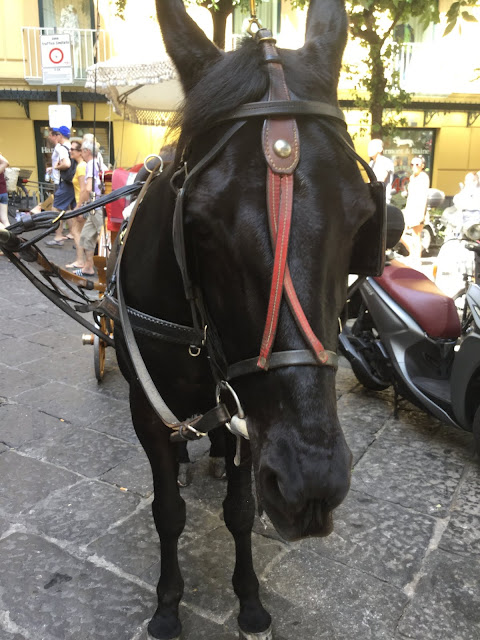











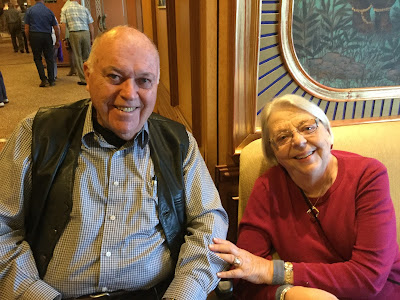









































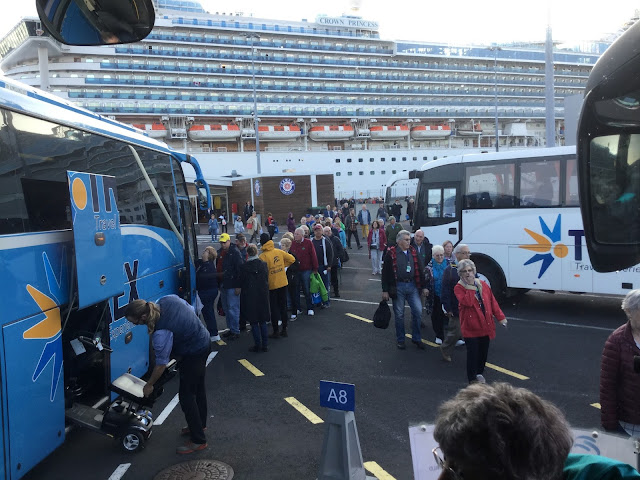
























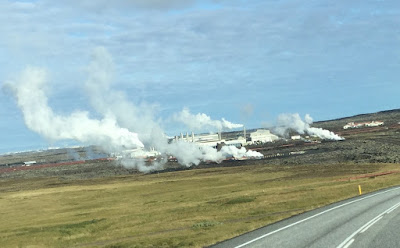























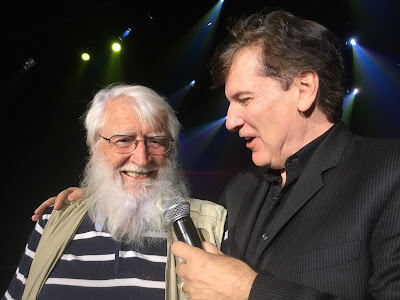

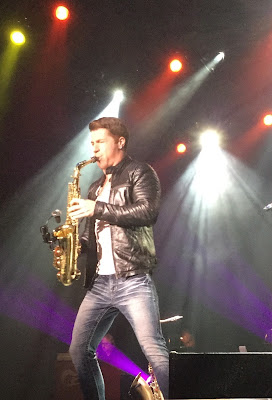









































































































































































No comments:
Post a Comment